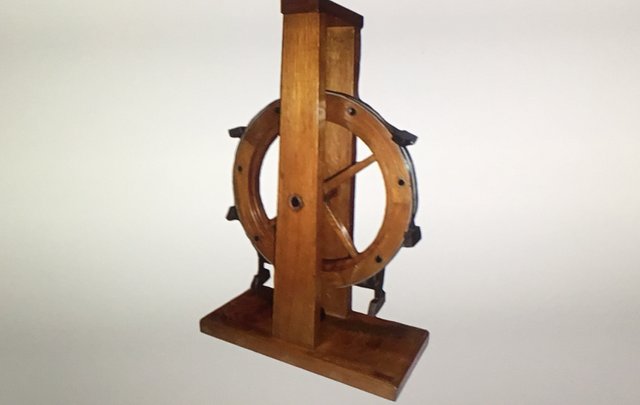Extropia’s Curious Science: Perpetual Motion
EXTROPIA’S CURIOUS SCIENCE: PERPETUAL MOTION
Anyone who has used any kind of machine knows that eventually it runs out of juice. Cars need refuelling, clockwork needs winding, electrical gadgets need recharging. If only it were possible to build a machine that could run forever.
This dream, known as ‘perpetual motion’, has occupied people’s minds since at least the eighteenth century. In that time, an Indian astronomer by the name of Bhaskara thought that a wheel self-powered by mercury running along its spokes might do the trick. This attempt at perpetual motion is known as an ‘overbalanced wheel’ and most such machines have been a variant on this theme, using such things as atmospheric pressure, magnets and gravity.

(Image from wikimedia commons)
Most plans for perpetual motion machines got dismissed right away, but on rare occasions somebody comes up with something that gets more serious attention. One such example was Johann Bessler (or ‘Orfyreus’ as he called himself) who came up with ‘Orfyreus’ Wheel’ in 1712. This device is said to have run non-stop for three months while under close scrutiny from a team of scientists. So impressed was the Royal Society that they debated paying £20,000 for it, which is like a couple of million in today’s money. The purchase was never made, however, because in 1718 Bessler disappeared and took his device with him.
Not everyone believed Bessler had really invented true perpetual motion. In 1727, Anne Rosina Mausbergerin (Bessler’s maid) claimed the machine was really being powered from another room, although she could provide no evidence that this was indeed the trick being employed.
We can be pretty confident that some kind of cheating was going on, since the very idea of perpetual motion violates some very fundamental physical laws. These days patent offices refuse to grant patents to perpetual motion machines because it’s so well accepted that such a thing is impossible.
Having said that it is possible to build devices that run for a very long time indeed. One such device was built by William Strutt in 1903, one year before his discovery of argon earned him a Nobel Prize and a peerage (he became Lord Rayleigh). His machine consisted of an evacuated glass tube, inside which were two gold leaves that opened and closed. The source of this machine’s power was radioactive emissions from radium inside the container. It could have enabled this machine to run for well over a thousand years.
REFERENCES
‘Far Out’ by Mark Pilkington